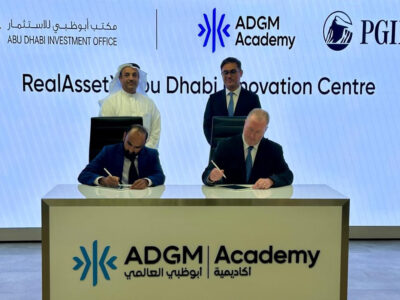As more channels come up in the Middle East and existing broadcasters up their offerings, we see a growing shift toward tapeless production in the region. Last month, we reported that i2TV, a small TV channel had invested in a tapeless facility. Early this year, the Sultanate of Oman Television, went live with Harris’s server-based news production and playout system. The project was undertaken by Harris’ local distributor and systems integrator, Mustafa Sultan Security & Communications Systems Co. LLC.
“Our system is based around a Harris NEXIO server platform with NewsFlash desktop editors, NewsFlash Preditor low-resolution browse editors, and Autocue QSeries newsroom and transmission automation,” says Mohammad Salim Marhouby, director general of engineering at the Ministry of Information, Oman.
“Choosing the tapeless production route was part of our long-term strategy to build a sophisticated, state-of-the-art facility that would be the envy of broadcasters in the region. Phase one at Oman TV began last year with the NEXIO server platform providing the hub of our news production and transmission facility in Muscat. We are the first organisation in the Middle East to use Harris’ newsroom systems,” he adds.
Oman TV has been broadcasting for more than 30 years in the country. It first went on air from Muscat in November 1974 and separately from Salalah in November 1975. In June 1979, these two stations merged to form a unified broadcasting service that now broadcasts its programme around the world via Arabsat, Nilesat, Hot Bird, Asiasat3, OptusB3, Telestar5, HISPA SAT and NSS7. Since 1997, Oman TV has also streamed programme material over the internet.
“We have been pleased with the way things have gone at Oman TV. However, moving to a tapeless production environment has not been without its difficulties. There was an initial reluctance to accept changes in our workflow — so changing the ways of the people working in our news facility has been one of our biggest challenges,: explains Marhouby. “We have spent a great deal of time educating our staff about the benefits of going tapeless, and this is paying dividends as our journalists soon realised the rewards and quickly converted to the new way of working. We currently have 10 journalists — three English-speaking and seven Arabic-speaking — working at Oman TV. Our expectation is that this number will increase to more than 50 in two years,” he adds.
Marhouby explains that going tapeless has allowed Oman TV’s production workflow process to be quite radically streamlined. “For instance, in the past we needed a handful of people to get a programme on air — from ingest to editing to playout. Today, our journalists each handle their own stories from start to finish. They search for material using the NewsFlash Preditor low-resolution editing tool, and cut their own stories on the NewsFlash editor, which has integrated newsroom computer system (NRCS) tools that allows them to easily tie the scripts to video from one simple interface. This has generated huge cost efficiencies across our whole facility, freeing underused staff for redeployment in other parts of our business,” he explains.
Likewise, Oman TV has also achieved other cost efficiencies by not having a vast number of tape systems because it no longer incurs head replacements costs. “Additionally, the huge reduction in our need for tape stock is bringing us further financial gain,” says Marhouby.
The workflow itself has been simplified. Once programme packages are created by the station’s journalists, they are stored on the NEXIO server, ready for transmission. The system at Oman TV makes use of an Autocue QSeries, a full suite of newsroom applications comprising scripting, rundown management, prompting, playout automation, media management, and production workflow. This system comprises the QNews NRCS, automation playout control, QMedia ingest and media management and Autocue prompting software. The system offers a modularity and functionality that allow the station to expand its facility and launch more channels in the future.
“It will be simple to add capacity and features to the Autocue system as our requirements grow,” explains Marhouby. “Additionally, the NEXIO also offered a solution that caters to our current needs while also being scalable for our future expansion plans. We have plans to move to HD transmission in future so it was important that we choose products that would enable us to do this if we made such a move. It was also vital that we chose a company that would be in the business for the long term. We chose Harris for this reason,” he continues.
“During our tender stage, we were also looking for a company with a strong commitment to systems integration and support. Harris’ commitment to the continued developments of the NEXIO server range gave us the reassurances we needed — allowing us to clearly see the upgrade path available to meet our business objectives for HD transmission.
NEXIO is a modular, scalable server system for transmission and news environments, which offers integrated application platforms for editing, browsing and media management across a multi-tiered storage hierarchy. As Oman TV’s operation grows, the NEXIO design will allow the station to build its systems ― up to 28.8 terabytes in a single domain — in small, low-cost increments.
“The scalability offered by the system and the continued robustness will ensure our future growth plans are protected. In addition, the NEXIO system’s ability to process material quickly and to ensure fast throughput will stand us in good stead,” adds Marhouby.
The system’s low-resolution browse and edit solution, NewsFlash Preditor, which shares a similar user interface with NEXIO NewsFlash high-resolution editors, provides Oman TV with collaborative and performance capabilities.







